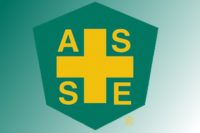Assistant Secretary of Labor for Occupational Safety and Health David Michael has tasked the National Advisory Committee on Occupational Safety and Health (NACOSH) with exploring how OSHA and the National Institute for Occupational Safety and Health (NIOSH) might encourage more professionals to enter the occupational safety and health field.
Michaels’ comments mark the first time OSHA has directed NACOSH, a congressionally established advisory body to OSHA and NIOSH, to examine the issue. He made the comments at NACOSH’s bi-annual meeting this week in Washington, D.C.
ASSE: Timing couldn't be better
The American Society of Safety Engineers (ASSE) is an enthusiastic supporter of the directive, and says the timing couldn’t be better: according to a 2011 NIOSH study assessing the occupational safety and health workforce, the estimated number of OSH professionals employers expect to hire in the coming years is substantially higher than the number estimated to be produced from OSH training programs.
“For the first time an advisory committee is taking a serious look at the issue of professionalism, and connecting the dots between the quality of the professionals and the strength of the profession,” said ASSE President Michael Belcher. “These questions – who does safety now, and who will do safety ten, twenty, and thirty years from now – have long been overlooked. We look forward to working with NACOSH on this charge, sharing all the resources and knowledge we have developed from considering these questions, and moving toward long-term solutions that ensure a strong profession made up of passionate and qualified professionals.”
ASSE President-Elect Thomas Cecich and ASSE Vice President of Professional Affairs James Thornton attended the meeting to discuss the need for more qualified safety professionals in the field and how stakeholders such as ASSE can work with NACOSH to encourage the growth of the profession.
Thornton asked NACOSH to consider the importance of the person doing the work, reminding them that, “Regulations are largely silent on who should be performing this work. Yet the person implementing these systems is a critical component,” he said. “What are the key qualifications for the people implementing safety and health management systems? And how we do educate employers on how vital a qualified safety professional is to their business?”
Initiatives already in motion
Thornton shared updates on the work the ASSE is doing to advance and grow the profession. Key among these initiatives are ASSE's work with the International Network of Safety and Health Practitioner Organizations (INSHPO) to develop the OHS Professional Capabilities Framework and related efforts to identify seven core competencies (or knowledge domains) that define the OSH discipline and a defined set of student-learning outcomes.
ASSE has also launched campaigns aimed at encouraging OSH students and professionals to obtain their degrees from ABET-accredited universities, and the ASSE Foundation annually provides more than $250,000 in scholarships and professional education grants, benefitting more than 100 students and professionals in safety.


